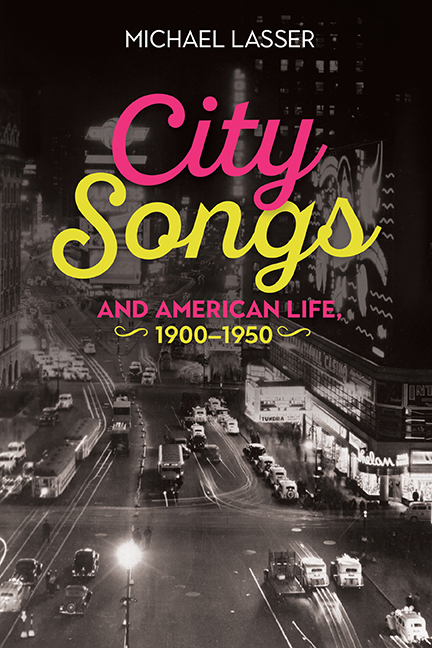Book contents
- Frontmatter
- Dedication
- Epigraph
- Contents
- Notes to the Reader
- Introduction: Encountering the City
- 1 The City's Clangor
- 2 Broadway's Melody
- 3 Harlem's Renaissance
- 4 Recordings, Radio, and Talkies
- 5 Starting the Century
- 6 The Flapper and the Jazz Age
- 7 The Great Depression
- 8 World War II
- Afterword
- Notes
- Bibliography
- Miscellaneous Endmatter
3 - Harlem's Renaissance
Published online by Cambridge University Press: 31 August 2019
- Frontmatter
- Dedication
- Epigraph
- Contents
- Notes to the Reader
- Introduction: Encountering the City
- 1 The City's Clangor
- 2 Broadway's Melody
- 3 Harlem's Renaissance
- 4 Recordings, Radio, and Talkies
- 5 Starting the Century
- 6 The Flapper and the Jazz Age
- 7 The Great Depression
- 8 World War II
- Afterword
- Notes
- Bibliography
- Miscellaneous Endmatter
Summary
For nearly two decades, the Harlem Renaissance burned with the immediacy of hot jazz. You can't pin a starting date on something as elusive as a renaissance, but a century later, you can still detect its beginnings. African American soldiers returning home from World War I assumed that things would be better now that they had proved their patriotism and bravery in France. Quite the contrary. Sarah and Elizabeth Delany described what it was like for their brother, Manross: “All the colored veterans came back just as proud as they could be, strutting around Harlem in their uniforms. Manross and his buddies thought they had proved themselves. They thought they would surely come home and be treated like citizens…. Manross said, ‘What more do I have to do to prove I'm American, too?’” Black leaders soon concluded that their efforts to improve conditions through education, economics, and politics had failed. In a conscious effort to change white attitudes, they turned to culture instead. At the urging of such figures as the sociologist and editor of the National Urban League's Opportunity magazine Charles S. Johnson; the historian, sociologist, and civil rights activist W. E. B. Du Bois; the poet, songwriter, activist, and attorney James Weldon Johnson; the NAACP's Walter White; and the Howard University philosopher Alain Locke, the Harlem Renaissance arose from the premise that arts and letters could transform a society. It was, first and foremost, a literary movement, made possible in part by financial support from Madam C. J. Walker, the first self-made female African American millionaire.
Such notable writers as Langston Hughes, Zora Neale Hurston, Jean Toomer, and Countee Cullen were coming into their own. A newly educated black middle class was growing in size and influence, and sophisticated white readers were ready to take black writers seriously— or so the argument went. After the war, Harlem became the “Mecca of the New Negro,” as a new intelligentsia of writers and artists affirmed racial identity, personal dignity, and equality in a larger white world. Alain Locke observed in 1925 that “the mind of the Negro seems suddenly … to be shaking off the psychology of imitation and implied inferiority.”
- Type
- Chapter
- Information
- City Songs and American Life, 1900–1950 , pp. 49 - 92Publisher: Boydell & BrewerPrint publication year: 2019



